Player Profile: Carrasco's success late last season should carry over into '15

To kick off our fantasy baseball preview, Michael Beller will profile certain players who may not fit as a breakout, sleeper or bust (all of which we'll discuss in our preview), but who will still make a major impact in fantasy baseball this season.
By time Terry Francona and pitching coach Mickey Callaway decided to place Carlos Carrasco back in the Indians’ rotation last year, they were longshots to make the playoffs. On Aug. 10, when Carrasco made his fifth start of the year—and first since late April—the Indians were 5.5 games behind the Tigers in the AL Central and five back of the Royals for the second wild-card spot. Carrasco struggled as a starter in the first month of the season, but pitched well on this day, going five shutout innings with four strikeouts in a win over the Yankees. That was merely the start of the best stretch of Carrasco’s career.
• Every MLB Winter Report Card | Follow free-agent signings with our tracker
Player Profile: Don't sleep on Alex Wood, who has plenty of room to grow
Over the final seven weeks of the season, Carrasco made 10 starts. He went 5-3 with a 1.30 ERA, 1.73 FIP, 0.81 WHIP and 78 strikeouts in 69 innings. His strikeout rate was a blistering 29.8%, while his walk rate was all the way down at 4.2%. For seven weeks, Carlos Carrasco was Clayton Kershaw.
It should be self-evident that Carrasco is not, in fact, Kershaw. The question for our purposes here is did the soon-to-be 28-year-old righty with a 5.29 career ERA entering 2014 have an out-of-body experience for seven weeks, or did he fundamentally change as a pitcher?
The Indians gave Carrasco an opportunity to start right out of the gates last year, and he was simply overmatched. He made four starts in April, allowing 17 earned runs on 24 hits and nine walks in 22 innings. He righted the ship in the bullpen over the next four months, compiling a 2.30 ERA, 2.92 FIP and 23.2-% strikeout rate in 43 innings as a reliever. Even that performance didn’t presage what Carrasco would do once he got back in the rotation.
Carrasco broke out in the second half on the strength of two of his offerings. Specifically, Carrasco’schangeup became a real weapon after the All-Star break. Before we get to the pitch itself, let’s check out a couple of tables. The first one is Carrasco’s percent usage of each pitch by month. The second is his swinging-strike rate, also by month, for every pitch in his repertoire. Both are from Brooks Baseball.
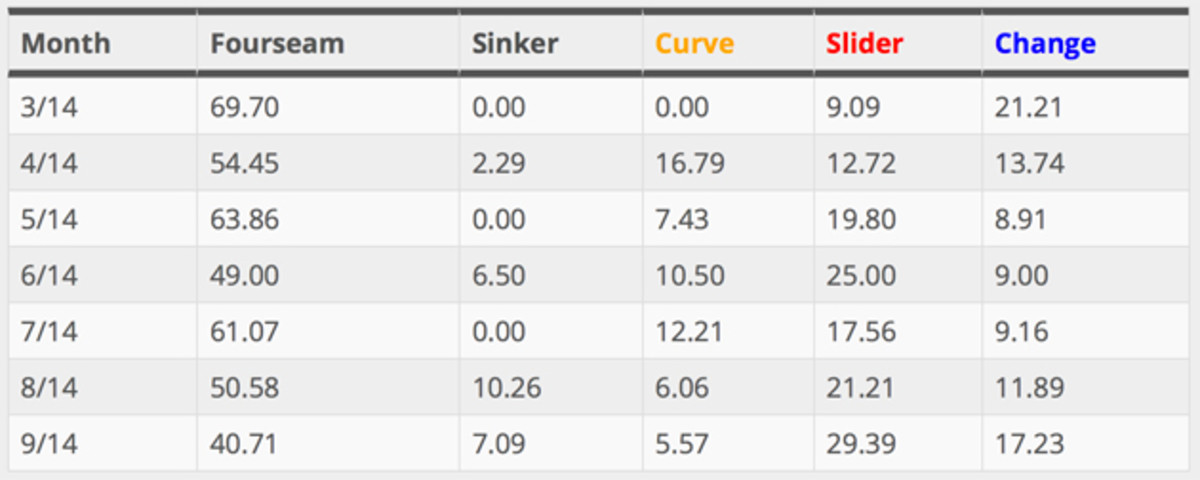
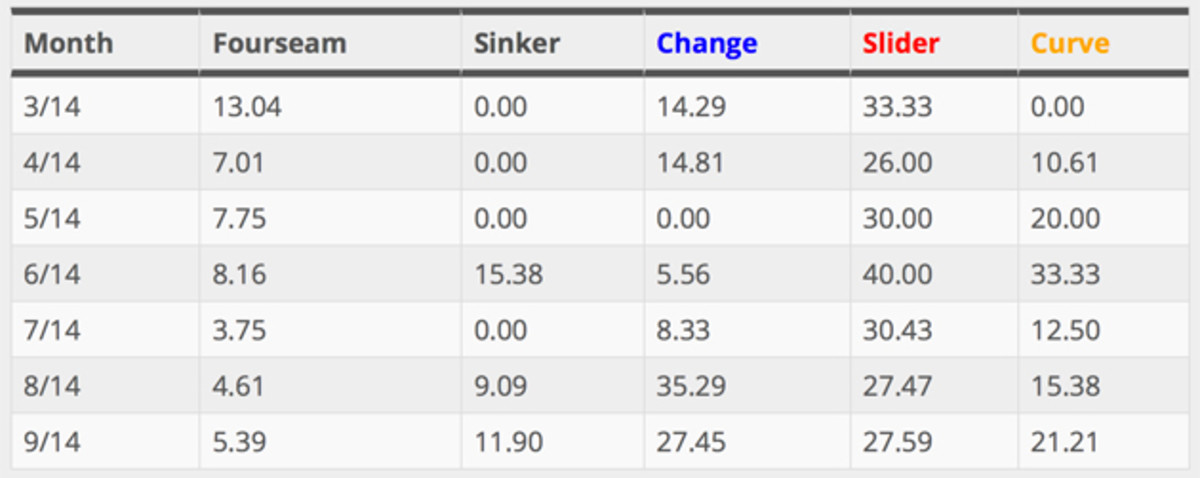
We can see that the pitch resulted in far more empty swings in the second half. The nature of the pitch itself, however, does not appear to have changed very much. The horizontal and vertical movement on the pitch remained relatively flat from month to month. He had strong command over the pitch in both halves of the season, rarely letting it get belt high or higher, as you can see from his first- and second-half heat maps for the pitch.
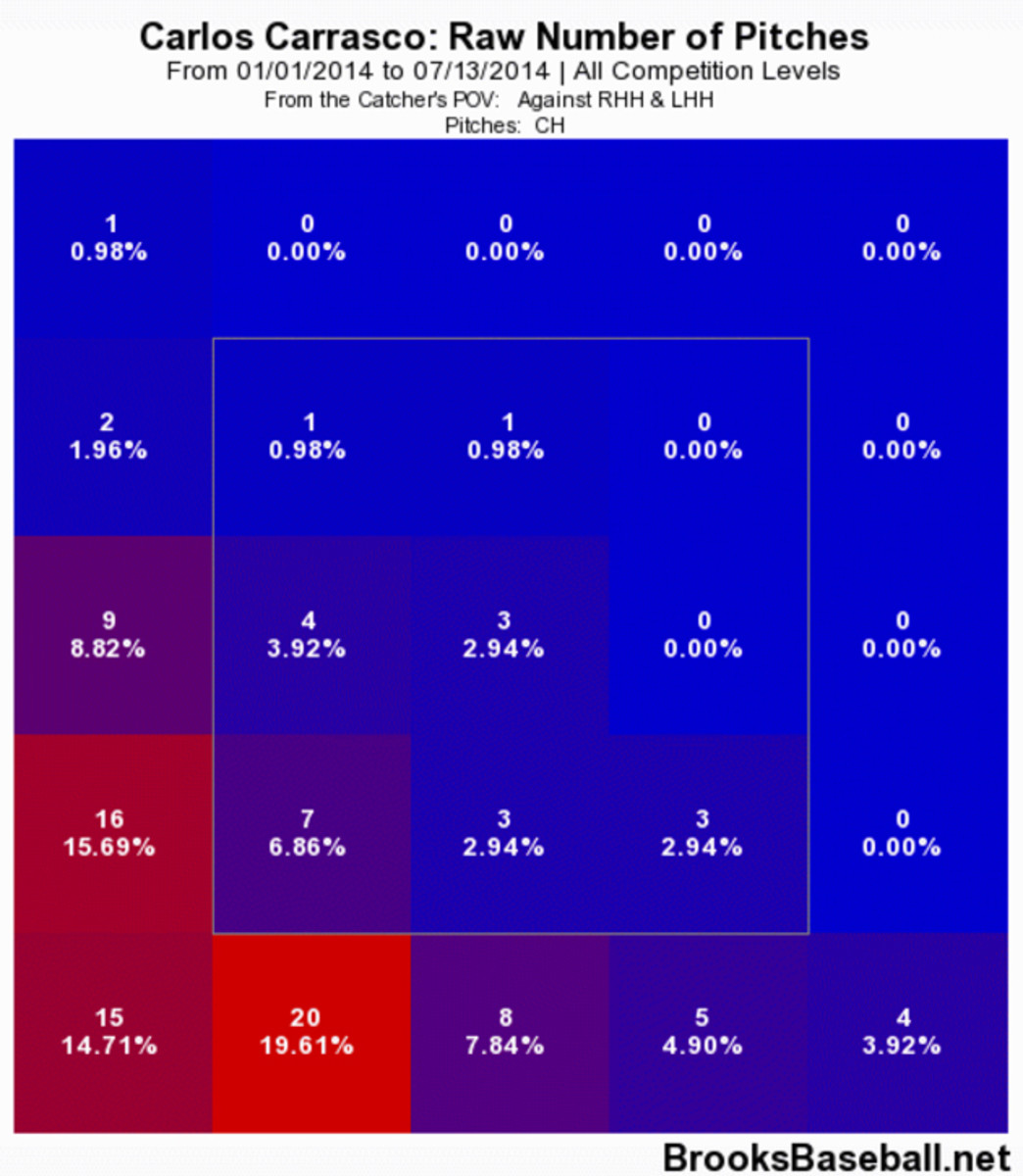
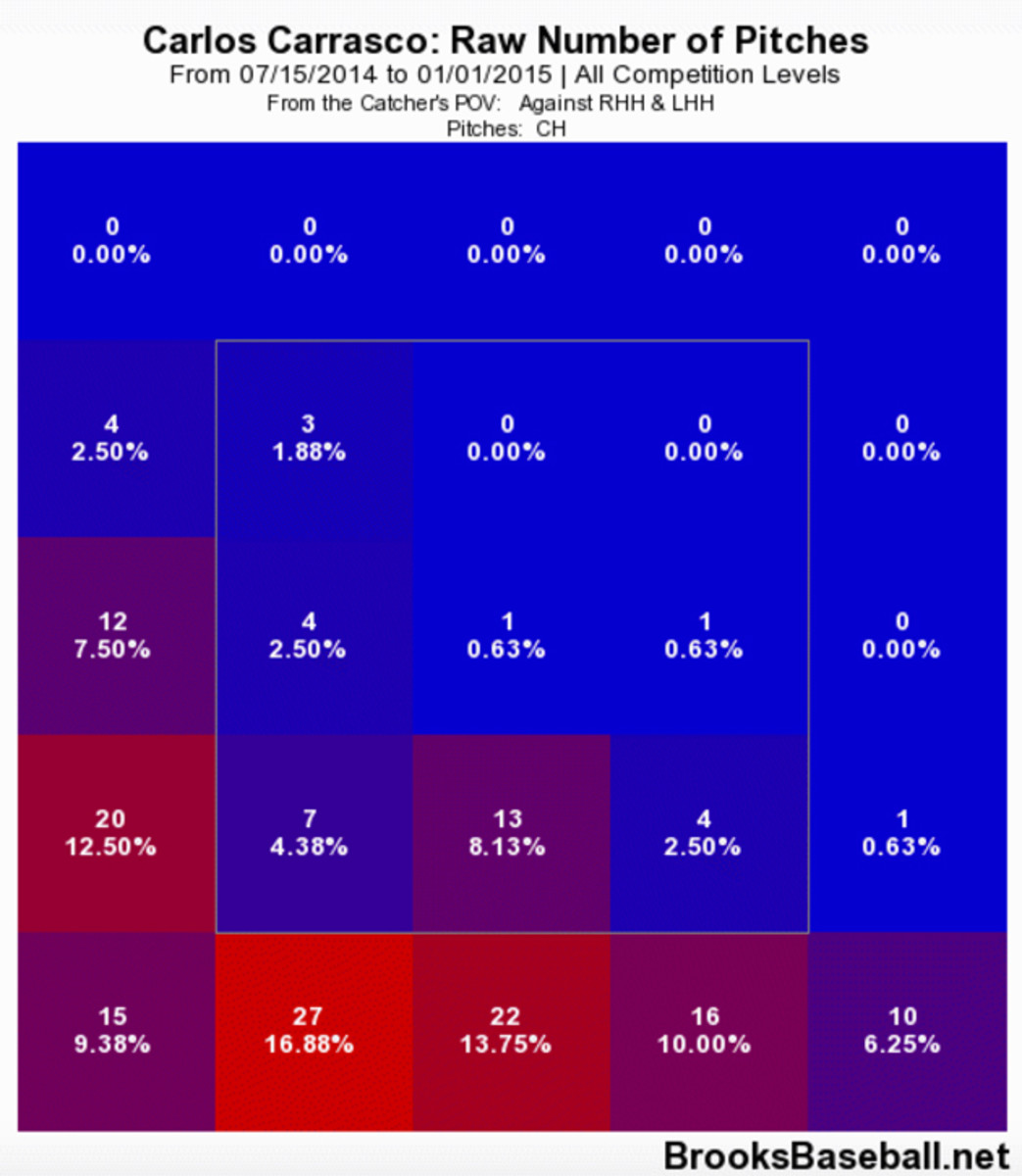
It wasn’t that Carrasco’s changeup became more effective. It was that it became harder to differentiate from his fastball. The following heat map charts Carrasco’s fastball by zone in the first half. Pay particular attention to how frequently it was up in the zone.
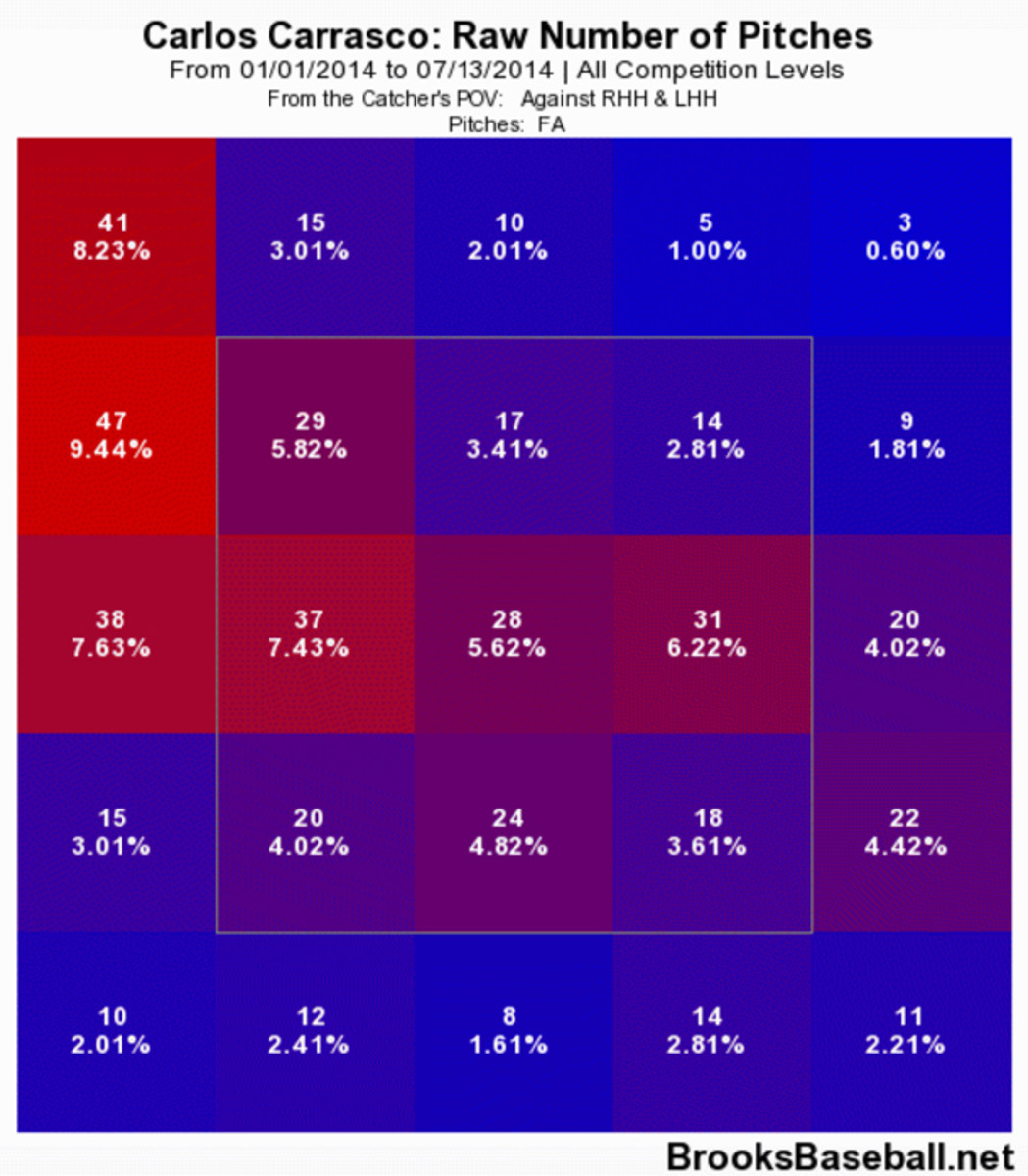
The next heat map is his fastball from the second half. Clearly, something happened that let him pound the bottom of the zone with fastballs.
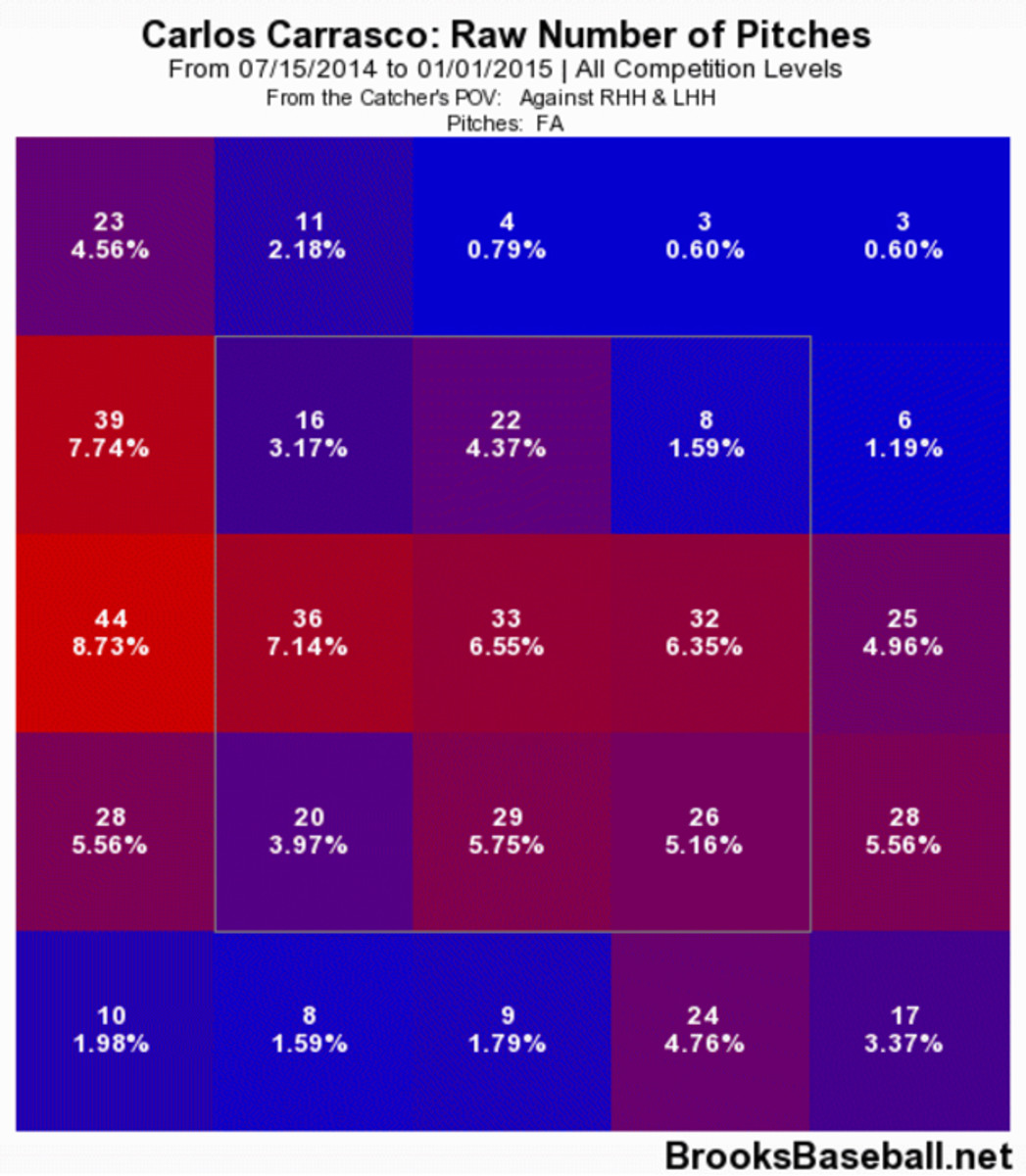
With the fastball and changeup now both coming in at the knees regularly, it became harder for hitters to tell the two apart. Opposing batters hit .312 and slugged .459 against his fastball in the first half of the season. In the second half, those rates plummeted to .243 and .333, respectively. What was it that changed in the second half, you ask? His arm slot.
The first screenshot below is from Carrasco’s first start of the year, an April 5 outing against the Twins. In fact, this is his second pitch of the season. Look how far above his shoulder his elbow is on this fastball to Brian Dozier.
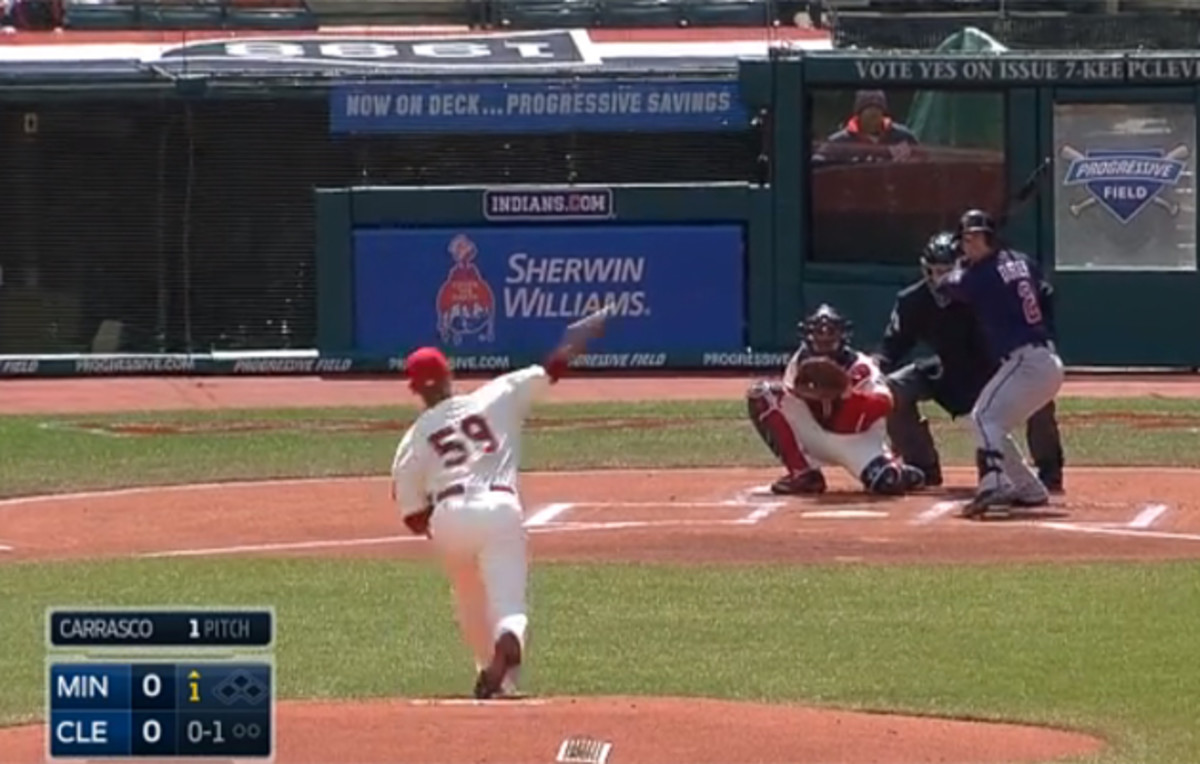
Carrasco missed his spot by the entire width of the plate. Dozier belted it for a leadoff home run. Compare the screenshot above to the one below, and look how far Yan Gomes has to reach for the pitch.
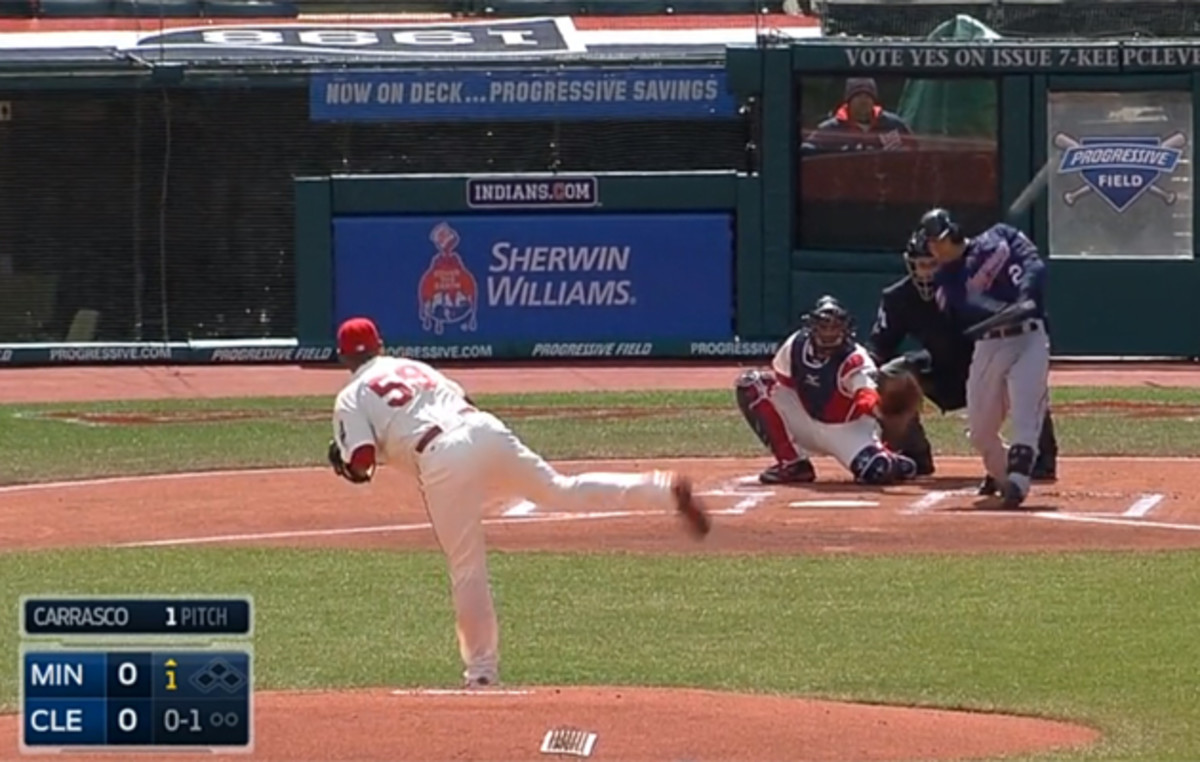
Contrast that with this example from a Sept. outing against the Astros. Carrasco was well into his stretch of dominance at this point, but this would be his magnum opus. He tossed a complete game shutout, striking out 12 while allowing just two hits and walking one batter. In this particular at-bat, he fans Jonathan Villar looking with a fastball that paints the outside corner. Look at how much lower his arm slot is here.
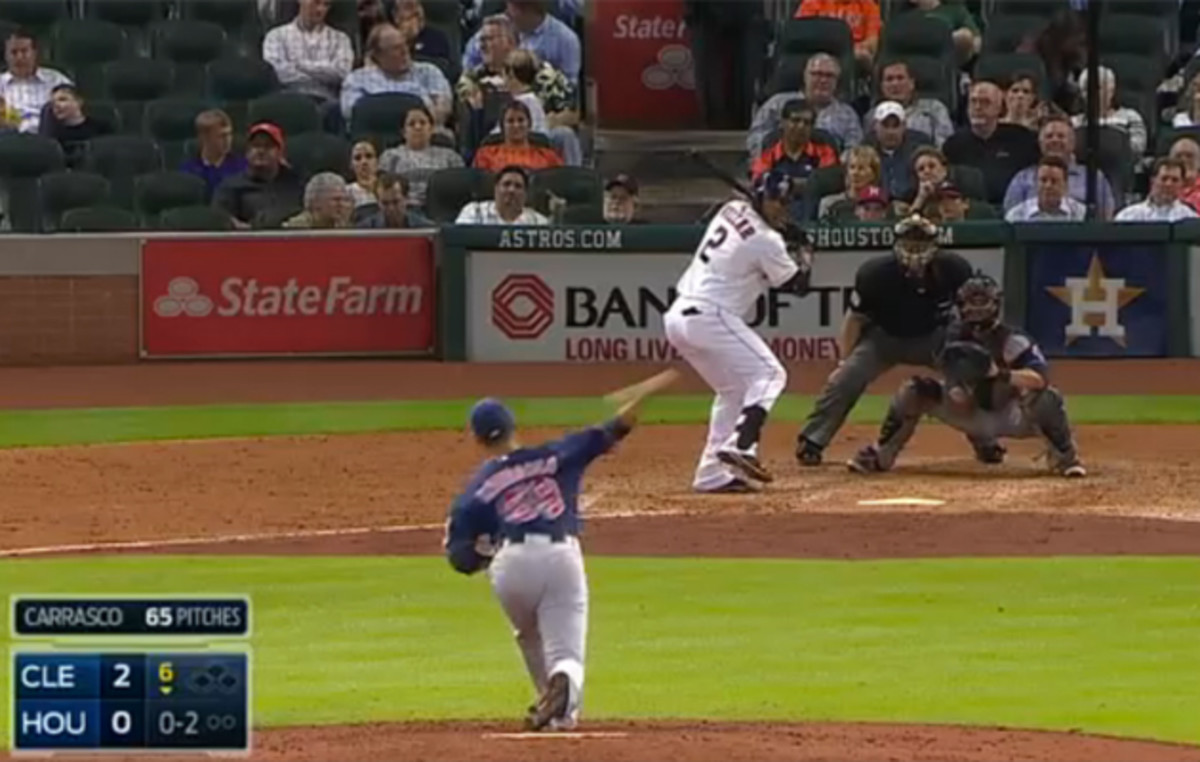
Now let’s watch him paint his masterpiece.
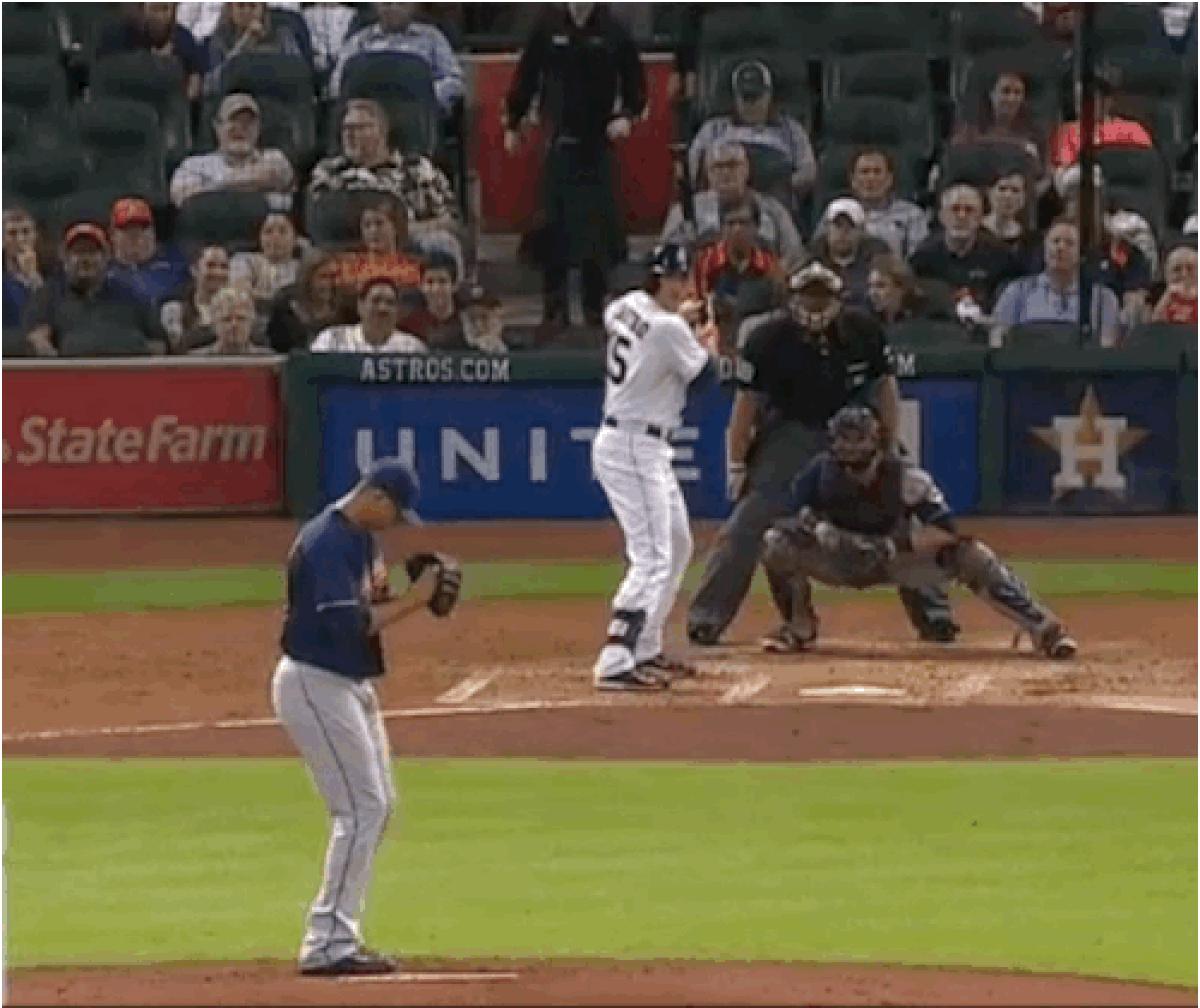
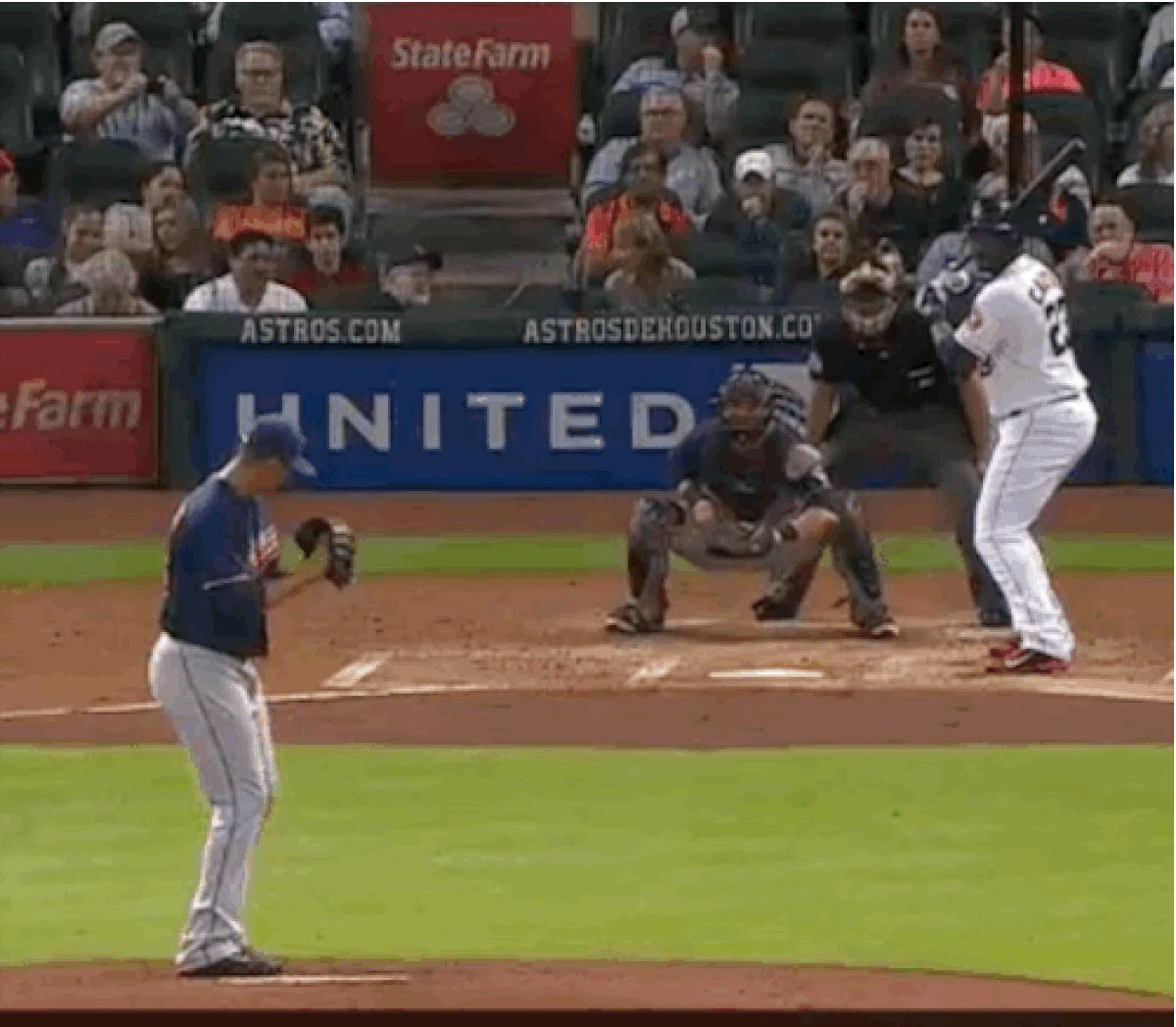
That slider which he used to make Chris Carter, among many others, look foolish, cannot get lost in the shuffle. You can refer back to the whiff-rate table above, but it suffices to say that Carrasco’s slider was among the best in the league once he got his arm slot figured out. According to Fangraphs, Carrasco saved 4.13 runs per 100 offerings with his slider. Had he thrown enough innings to qualify for the ERA title that would have rated by far the most effective slider in the league. Sonny Gray ended up taking home that honor, with 3.22 runs saved with his slider, per 100 pitches.
The adjustments Carrasco made last year were real, substantive ones that should stick in 2015. Now that he has a repeatable delivery, thanks to a comfortable arm slot, it’s safe to bet, especially at his 119.51 ADP, that Carrasco will be worth every penny in fantasy leagues this season.
